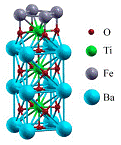Department of Physics and Astronomy: Publications and Other Research

Evgeny Tsymbal Publications
ORCID IDs
Tsymbal http://orcid.org/0000-0002-6728-5535
Document Type
Article
Date of this Version
10-14-2014
Citation
Physical Review B (2014) 90: 155307
doi: 10.1103/PhysRevB.90.155307
Abstract
One of the great successes of modern condensed matter physics is the discovery of topological insulators (TIs). A thorough investigation of their properties could bring such materials from fundamental research to potential applications. Here, we report on theoretical investigations of the complex band structure (CBS) of two-dimensional (2D) TIs. We utilize the tight-binding form of the Bernevig, Hughes, and Zhang model as a prototype for a generic 2D TI. Based on this model, we outline the conditions that the CBS must satisfy in order to guarantee the presence of topologically protected edge states. Furthermore, we use the Green’s function technique to show how these edge states are localized, highlighting the fact that the decay of the edge-state wave functions into the bulk of a TI is not necessarily monotonic and, in fact, can exhibit an oscillatory behavior that is consistent with the predicted CBS of the bulk TI. These results may have implications for electronic and spin transport across a TI when it is used as a tunnel barrier.


Comments
Copyright 2014, American Physical Society. Used by permission